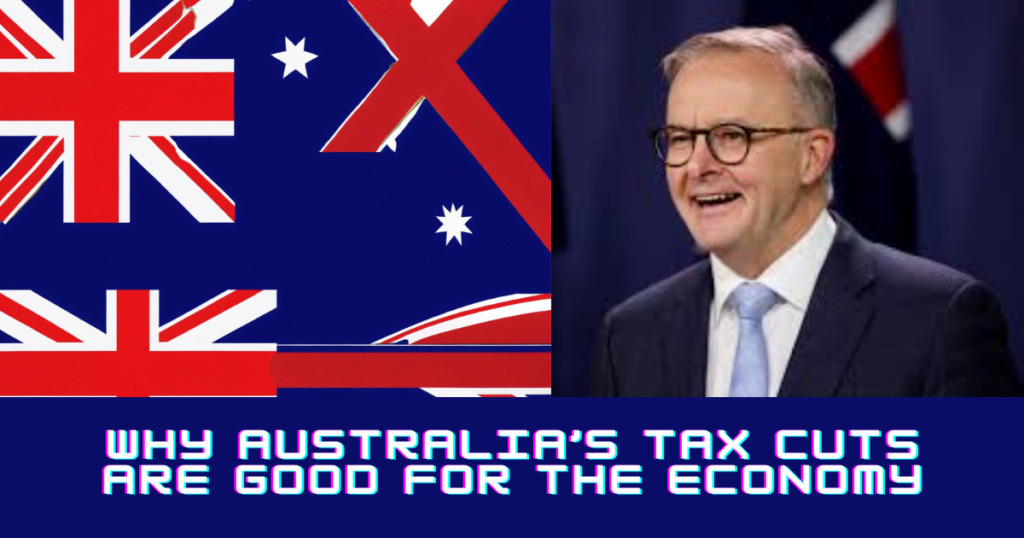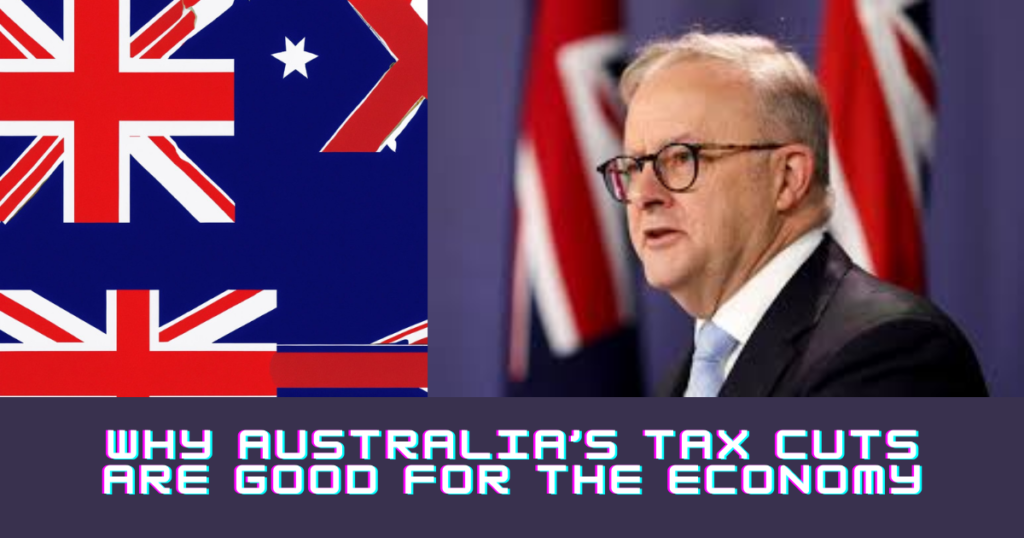Introduction
In a bold move to tackle economic challenges and address the concerns surrounding soaring living costs, Australian Prime Minister Anthony Albanese announced on Sunday, February 4, 2024, that his government would be introducing legislative changes to planned tax cuts. This article delves into the intricate details of the proposed Australia’s Tax Cuts Are Good for the Economy, exploring its pivotal components, implications, and the ensuing political landscape.

- 1. Legislative Intentions
- 2. Legislative Timeline
- 3. Tax Bracket Adjustments
- 4. Impact on High-Income Earners
- 5. Previous Hints and Recent Announcement
- 6. Inflationary Pressures: Australia’s Tax Cuts
- 7. Cost-of-Living Relief Package
- 8. Opposition Criticisms: Australia’s Tax Cuts
- 9. Economic Concerns and Budget Deficit
- 10. Senate Showdown: Australia’s Tax Cuts
- 11. Broader Relief Measures
- 12. Public Support Dynamics
- 13. International Scrutiny: Australia’s Tax Cuts
- Conclusion Australia’s Tax Cuts
- People also Ask-Australia’s Tax Cuts
- Disclaimer
1. Legislative Intentions
Prime Minister Albanese’s announcement highlighted the government’s strategic approach to reduce benefits for high-income earners. And simultaneously providing much-needed relief for those with lower incomes.
2. Legislative Timeline
Albanese disclosed that the actual legislation would be unveiled later in the day, with the bill set for introduction into the parliament on Tuesday. The government aims to secure passage during the existing session of the federal parliament, resuming on February 6, 2024.
3. Tax Bracket Adjustments
Under the proposed policy, individuals earning up to A$135,000 ($88,763) will transition into lower tax brackets. By marking a substantial shift in the country’s tax structure set to take effect from July 1, 2024.
4. Impact on High-Income Earners
High-income earners poise to witness nearly halved tax breaks, with the redirected savings aimed at alleviating the financial challenges faced by lower-income individuals and families.
5. Previous Hints and Recent Announcement
Albanese had alluded to impending legislative changes without specifying a timeline. The recent announcement solidifies the government’s commitment to promptly addressing economic concerns.
6. Inflationary Pressures: Australia’s Tax Cuts
Against the backdrop of high inflation, reaching 7.8% in December 2022 and subsequently easing to 5.4% in the third quarter of 2023, the government aims to ease the financial strain experienced by Australian households.
7. Cost-of-Living Relief Package
The tax cut reshaping embedded in a broader A$23 billion cost-of-living relief package introduced by the Albanese-led Labour government in May 2023. This comprehensive initiative includes measures such as minimum wage increases, expanded child care subsidies, pension boosts. And investments in renewable energy and infrastructure.
8. Opposition Criticisms: Australia’s Tax Cuts
Political opponents, led by Scott Morrison’s Liberal Party, criticize Albanese for breaking an election pledge not to modify the tax policy implemented by the previous government in 2019.
9. Economic Concerns and Budget Deficit
The opposition contends that the proposed changes may have adverse effects on the economy, potentially discouraging investment and innovation and leading to an increase in the budget deficit.
10. Senate Showdown: Australia’s Tax Cuts
With the opposition vowing to block the bill in the Senate, where the government lacks a majority, the upcoming parliamentary debates expect to be intense and pivotal.

11. Broader Relief Measures
Beyond tax cuts, the relief package’s holistic approach aims to stimulate economic growth, create jobs. And reduce income inequality, presenting a multifaceted strategy to navigate Australia’s current economic challenges.
12. Public Support Dynamics
As both political sides gear up for a heated debate, the quest for public support becomes crucial, particularly with the federal election scheduled for May 2024.
13. International Scrutiny: Australia’s Tax Cuts
Given Australia’s status as a major Asia-Pacific economy and a key ally of the United States, the proposed tax cut reshaping is likely to attract international attention and scrutiny.
Conclusion Australia’s Tax Cuts
Australia stands on the cusp of a transformative shift in its tax landscape, responding strategically to economic pressures. The ensuing debates, political maneuvers, and public discourse will undoubtedly shape the trajectory of the country’s fiscal policies, setting the stage for the upcoming federal election.
People also Ask-Australia’s Tax Cuts
1. Q: What is the main objective of Australia’s proposed tax cut reshaping?
- A: The primary goal is to reduce benefits for high-income earners while providing relief for lower-income individuals, addressing economic challenges and the impact of high living costs.
2. Q: When will the changes to tax brackets take effect?
- A: The new tax brackets are set to come into effect from July 1, 2024, marking a significant shift in Australia’s tax structure.
3. Q: How does the government plan to tackle high inflation and its impact on households?
- A: In addition to tax cuts, the government introduced a comprehensive A$23 billion cost-of-living relief package in May 2023, targeting inflation-related financial pressures through measures such as minimum wage increases and childcare subsidies.
4. Q: Why is the opposition criticizing Prime Minister Albanese regarding tax policy changes?
- A: The opposition claims that Albanese is breaking an election pledge not to modify the tax policy implemented by the previous government in 2019, leading to concerns about the potential negative impact on the economy.
5. Q: How likely is it that the proposed tax cut reshaping will be implemented given the opposition’s stance?
- A: The implementation is uncertain as the opposition has vowed to block the bill in the Senate, where the government lacks a majority. The upcoming parliamentary debates will play a crucial role in determining the fate of the proposed changes.
Disclaimer
This article has been created on the basis of internal data, information available publicly, and other reliable sources to be believed. The article may also include information which are the personal views/opinions of the authors. The information included in this article is for general, educational, and awareness purposes only and is not a full disclosure of every material fact.
All the information on this website i.e. World Virtual CFO – is published in good faith and for general information purposes only. World Virtual CFO does not make any warranties about the completeness, reliability, and accuracy of this information. These are my views for only information purposes. Any action you take upon the information you find on this website (World Virtual CFO), is strictly at your own risk. World Virtual CFO will not be liable for any losses and/or damages in connection with using our website. For details please refer to our disclaimer page.
Dr. Dinesh Sharma is an award-winning CFO and AI strategist with over two decades of experience in financial leadership, digital transformation, and business optimization. As the founder of multiple niche platforms—including WorldVirtualCFO.com—he empowers professionals and organizations with strategic insights, system structuring, and innovative tools for sustainable growth. His blogs and e-books blend precision with vision, making complex financial and technological concepts accessible and actionable.